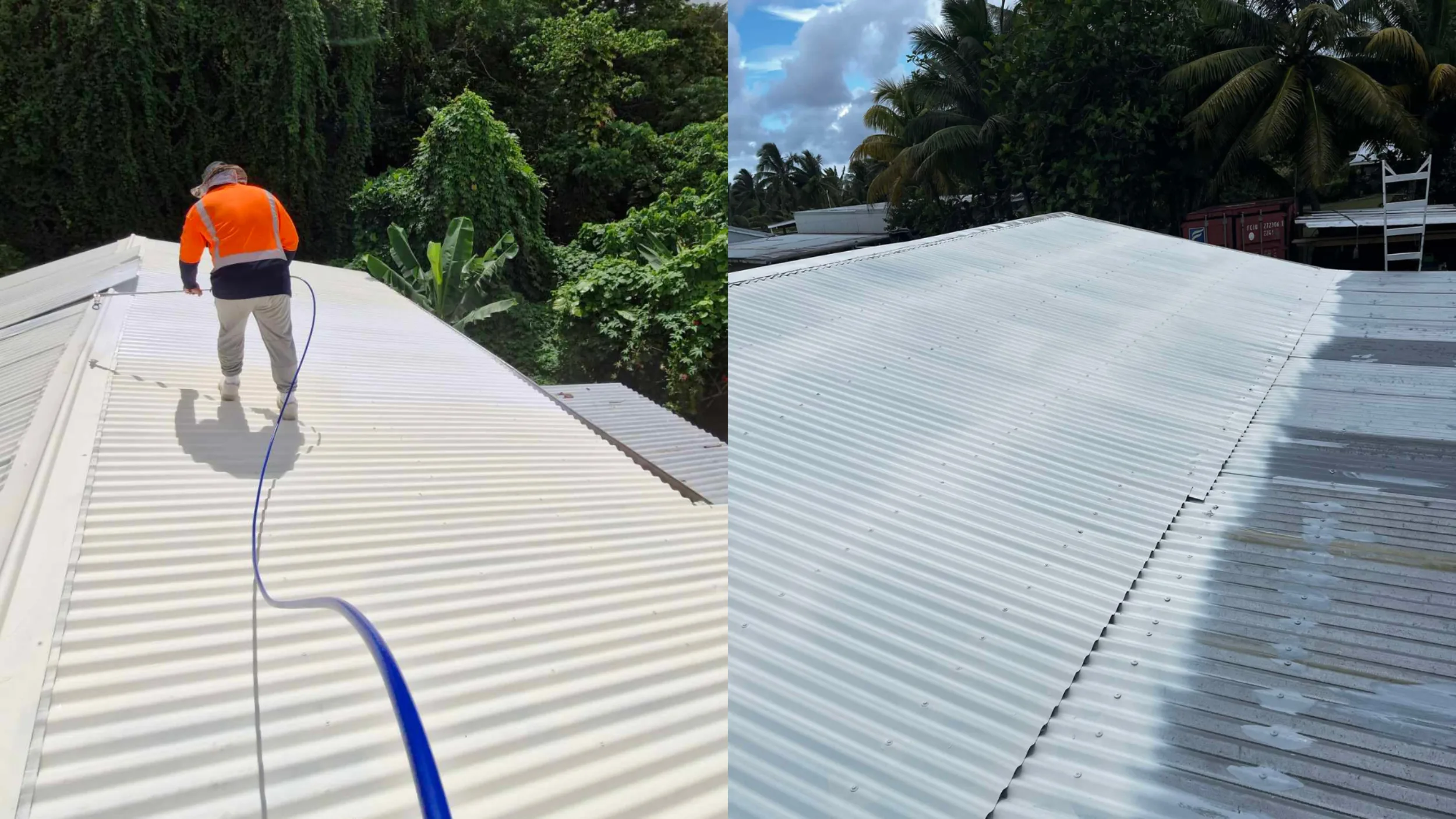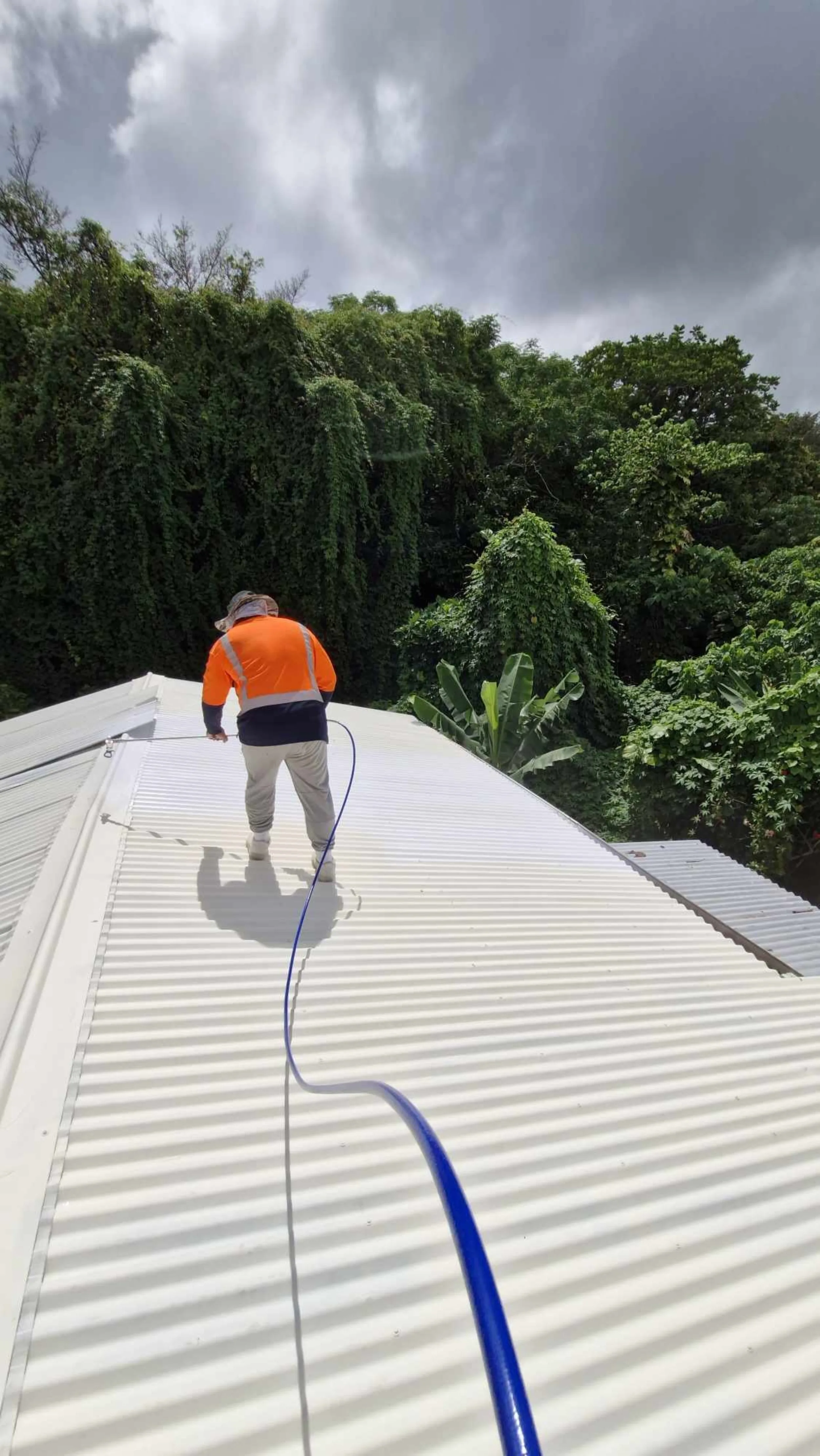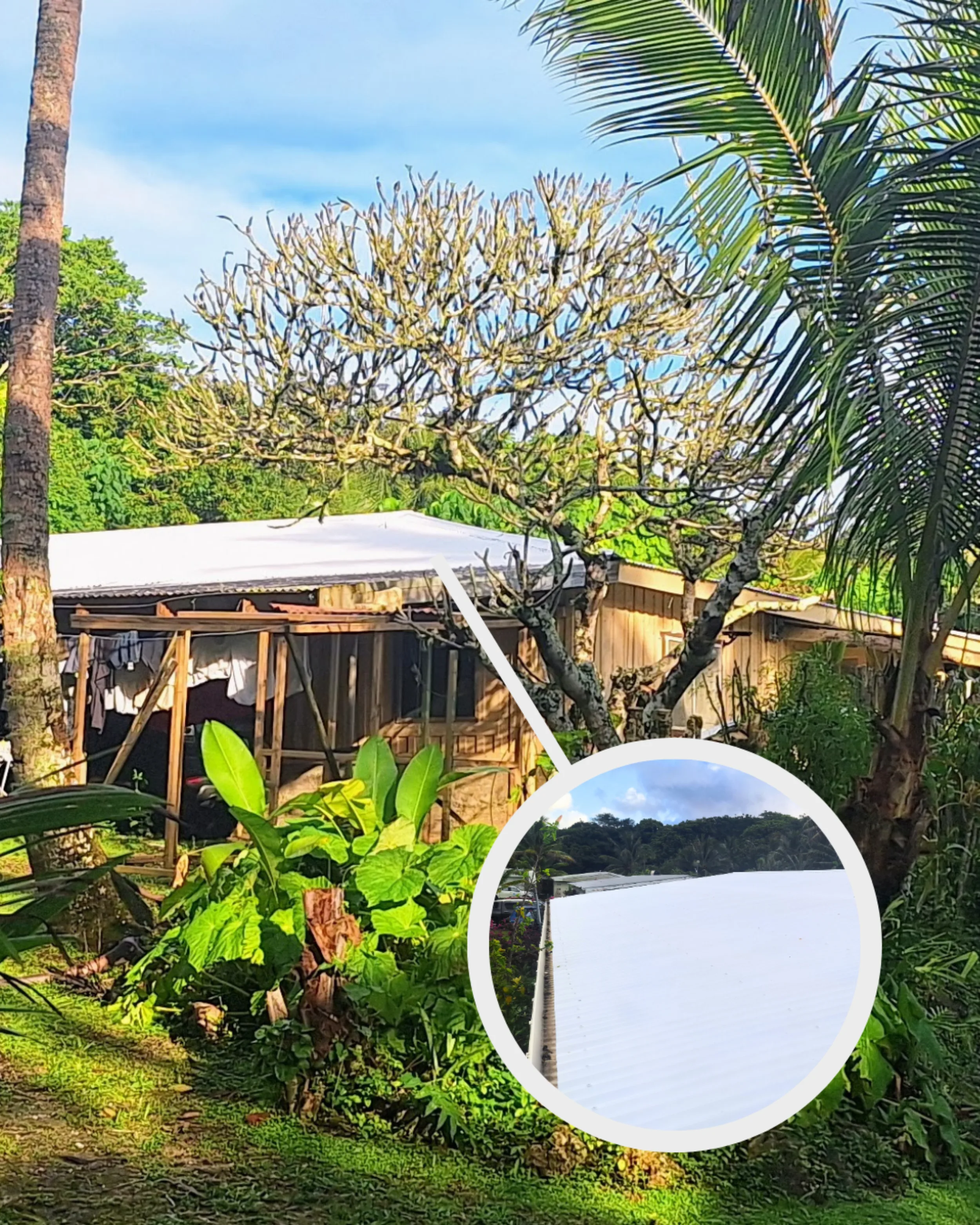Our world is getting hotter. And so are our homes.
In this article:
Heat is seriously affecting the health of millions of people, especially in climate hotspots with inadequate housing. In the South Pacific, the heat doesn’t just burn; it burdens. It burdens sleep, health, learning, and livelihoods for countless families.
Habitat for Humanity New Zealand is supporting the REFLECT project, an evidence-based study in Niue researching the effectiveness of heat-reflective paint on improving the health and wellbeing of homeowners.
As climate change is predicted to worsen over the next several decades, so will the adverse effects of extreme heat. It is estimated that between 2030 and 2050, there could be 94,000 annual deaths due to climate-induced heat.*
Poor housing, built with low-cost materials such as corrugated iron, and with limited ventilation or insulation, contributes to extreme indoor temperatures, increasing the risk of a range of health issues associated with heat stress.
The impact of increased heat in low and middle-income countries threatens to worsen global health inequities. As noted by the World Health Organization (WHO) Housing and Health Guidelines report (2018), large numbers of people in developing countries, as well as low-income groups in developed countries, do not have access to things like air conditioning, quality building materials, natural ventilation, and increased air motion (fans) to cool indoor temperatures. “As a consequence, low socioeconomic groups are at higher risk of heat-related mortality”, says this report.
Most affected of those groups are those that spend more time in their homes, such as children, women, elderly, and people living with disabilities.
Rather than a place of refuge from the heat, homes become a place of risk.
REFLECT is a global study which looks at the health and wellbeing impacts of using cool roof paint as a way to passively reducing indoor temperatures. While cool roof/reflective paint is not new, what is new is evidence the REFLECT team is gathering to better understand the long-term impact on the health and wellbeing of residents that this simple and cost-effective initiative can provide.
In the areas where this study is being undertaken, including Niue, the REFLECT team works within the community to identify homes which are suitable to have their roofs painted with the low-cost, sunlight reflective roof paint to create a ‘cool roof’. The study then monitors the sleep, heart rate and activity of residents through smart devices to monitor the impact on health and wellbeing. Through this randomized control trial (RCT), the gold-standard for measuring impact, this data is contrasted with residents whose homes have not received this intervention.
By lowering indoor temperatures, cool roofs can alleviate heat-related health risks, improve comfort, and decrease energy consumption.
The REFLECT trial is being conducted across several climate-vulnerable regions, including Niue, Mexico, India, and Burkina Faso.
A previous randomised control study in West Africa showed that the cool roof solution:
Now, the study is expanding.
Habitat for Humanity has supported the REFLECT project to carry out a cool roof trial in Niue to assess the effectiveness of the solution is a South Pacific Island environment. With scientific data and Habitat’s 30-year experience improving shelter in the Pacific, this study is a great opportunity to inform climate and heat adaptation in a changing world.
Niue is a small island nation in the South Pacific with vibrant coral reefs and strong Polynesian heritage. Although it’s one of the world’s largest raised coral atolls, it would take you an hour and a half to drive all the way around Niue and, with a population of just 1,681 (2022 Census), it is one of the least populated countries** in the world.
Like many Pacific nations, Niue faces mounting pressures from climate change. Rising temperatures, water scarcity, and increasingly intense cyclones threaten both homes and livelihoods. Longer dry spells now put pressure on rainwater supplies, the island’s main source of drinking water. Combined with limited access to mitigations like air conditioning, these conditions can make everyday life in Niuean homes stiflingly hot and humid, particularly during the summer months.
In this climate hot spot of the South Pacific, the cool roof solution studied by REFLECT can be a key tool in the face of rising heat stress.
As of March 2025, cool roof paint has been applied to more than 20% of homes in Niue and monitoring of resident’s health has begun.
Local community members are not just participants in the trial; they are also implementers and drivers of the outcomes. Through hands-on training and mentorship from a professional painter from New Zealand, locals are learning valuable new skills in cool roof application and project management. This approach not only ensures that the project is grounded in community ownership but also opens future opportunities for income generation and personal home maintenance, creating lasting benefits well beyond the trial itself.
Projects like the REFLECT trial show that with the right partnerships, science and community action can come together to create tangible change, even in some of the world's most remote and vulnerable places.
Supporting the REFLECT trial is part of Habitat New Zealand’s commitment to thinking differently about housing, backing innovative solutions that address not only structural needs but also environmental challenges that impact daily life.
We’re looking forward to bringing you further updates and findings from this exciting study in shelter adaptation, to support greater community resilience to the effects of climate change.
Sources
* https://www.reflect.org.nz/about-us
** https://en.wikipedia.org/wiki/...;
If you wish to make a donation via credit card over the phone, please phone us on (09) 579 4111
You can donate via internet banking:
Habitat for Humanity New Zealand
ANZ
06-0177-0127197-00
If you wish your donation to go to a specific appeal please include in the payment Reference
If you make a donation on our website your receipt will be emailed to you automatically.
If you choose to donate via internet banking, you will receive your receipt via email 1-2 days after you make your donation. If no email address is given, your receipt will be posted to the address given.
Donations over $5.00 are tax deductible. You can submit your receipt to IRD website, and they will process your tax rebate.
Yes, you can give regular monthly donations to your chose Habitat for Humanity appeal. Just select 'give monthly' when processing your donation payment.
You can change, cancel or suspend your monthly donation at any time. Please email us at info@habitat.org.nz, or phone us on (09) 579 4111.
Your credit card will be charged once you submit your first monthly gift, and future donations will be made on that same day going forward. If you wish to change your payment date to better suit your pay cycle, please get in touch via information@habitat.org.nz, or phone us on (09) 579 4111 and we can easily action that for you.
Yes, you will receive an annual tax receipt at the close of the financial year, recording all donations.
Yes, if you wish to donate via internet banking, our details are
Habitat for Humanity New Zealand
ANZ
06-0177-0127197-00
If you wish your donation to go to a specific appeal, please enter into your Reference
One tax receipt recording all your donations for the financial year, making it easy to claim your tax rebate.
With small payments spread out month to month, becoming a HopeBuilder can suit any budget. Even a small amount can have a huge impact.
Your donation occurs automatically each month, and you can pause, downgrade, upgrade, or cancel at any time.
Your regular support ensures long-term impact, all year long.
Please fill in the below enquiry form and we will be in touch soon.
Please fill in the below enquiry form with your details and we will be in touch within 2 working days.




